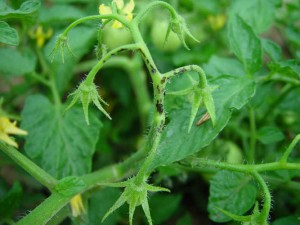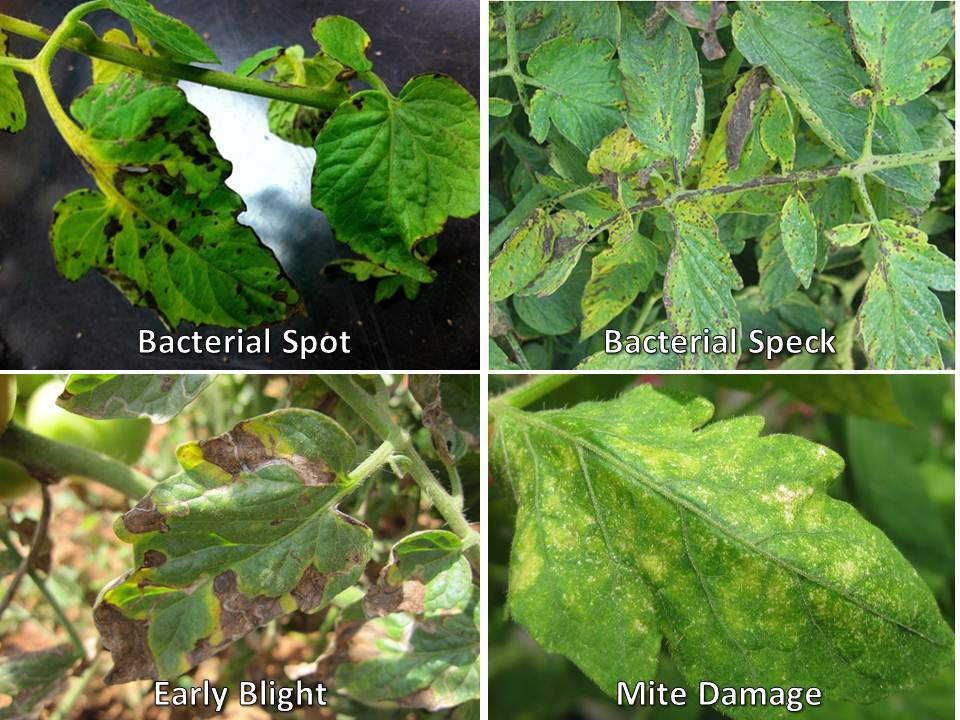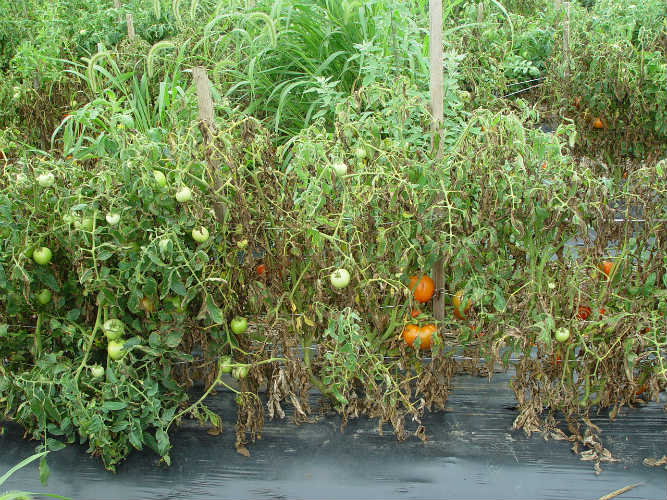What Is It? | Facts in Depth | For the Professional Diagnostician
Tomato Diseases | Bacterial Canker Fact Sheets
Bacterial Canker
Symptoms
Bacterial canker infections show a wide range of symptoms and can affect plants at all growth stages. Key diagnostic symptoms are provided for each tissue type.
Stem:
- Raised pustules on young seedlings
- Reddish-brown necrotic cankers, especially on older tissue
- Reddish-brown vascular discoloration, especially at base and nodes



Images of Bacterial canker on stems of tomato plants (left; center) and stem of a pepper plant (right).
Leaves:
- Raised pustules on young seedlings
- Necrotic marginal leaf tissue adjacent to a thin band of chlorotic tissue (firing)
- On severely infected tissue necrotic lesions with minimal chlorosis may be observed



Images of Bacterial canker on leaves of tomato plants (left; center) and on a pepper plant (right).
Roots:
- There are no diagnostic symptoms associated with root tissue
Fruit:
- Field grown tomatoes – small raised tan colored spots surrounded by a white halo on green and red fruit
- Greenhouse grown tomatoes – internal web-like appearance



Images of Bacterial Canker on tomato fruit (left) and peppers (center; left).
Signs
Bacterial streaming from the margin of a leaf, stem or fruit lesion.



Often Confused With
- Bacterial Spot – Look for large crusty lesions on the fruit with no white halo as indicators of bacterial spot.
- Bacterial Speck – Look for small black pin-point lesions on the fruit with no white halo as indicators of bacterial speck.
- Early Blight – Look for lesions with concentric rings and chlorosis as indicators of early blight.
- Mite Damage – Using a dissecting microscope look for live mites on the leaf surface as indicators of mite damage.

Isolation Media
Nutrient Broth Yeast (NBY) (pdf) Extract medium is a non-selective medium used for subculturing suspected clavibacters. Clavibacter michiganensis subsp. michiganensis colonies are yellow, round, entire and convex after 3-5 days at 82 °F.
Yeast extract-dextrose-calcium carbonate (YDC) (pdf) medium is a non-selective medium used for subculturing suspected xanthomonads and clavibacters. Xanthomonas spp. colonies on YDC medium are yellow, mucoid, round, entire and raised after 3 days at 82 °F.
D2ANX medium (pdf) is a semi-selective medium. Colonies grow slowly on D2ANX medium. After 7-10 days at 82 °F, colonies are light-creamy yellow, mucoid, round, entire and raised.

Available Rapid Diagnostic Tests
- Agdia ImmunoStrip®
- Agdia ® Enzyme Linked Immunosorbent Assay (ELISA)
- Envirologix™ DNAble Quick Stix
- Conventional Polymerase Chain Reaction (PCR) assays
- primers CMM5/6 CMM5/6 (pdf)
- primers CMM3/4 CMM3/4 primers (pdf)
- primers PSA8/R PSA8/R (pdf), PSA primers (pdf)
- Quantitative real time PCR Assay
- primers RZ ptssk protocol 10/11, probeRZ-ptssk12 PTSSK primers (pdf)

